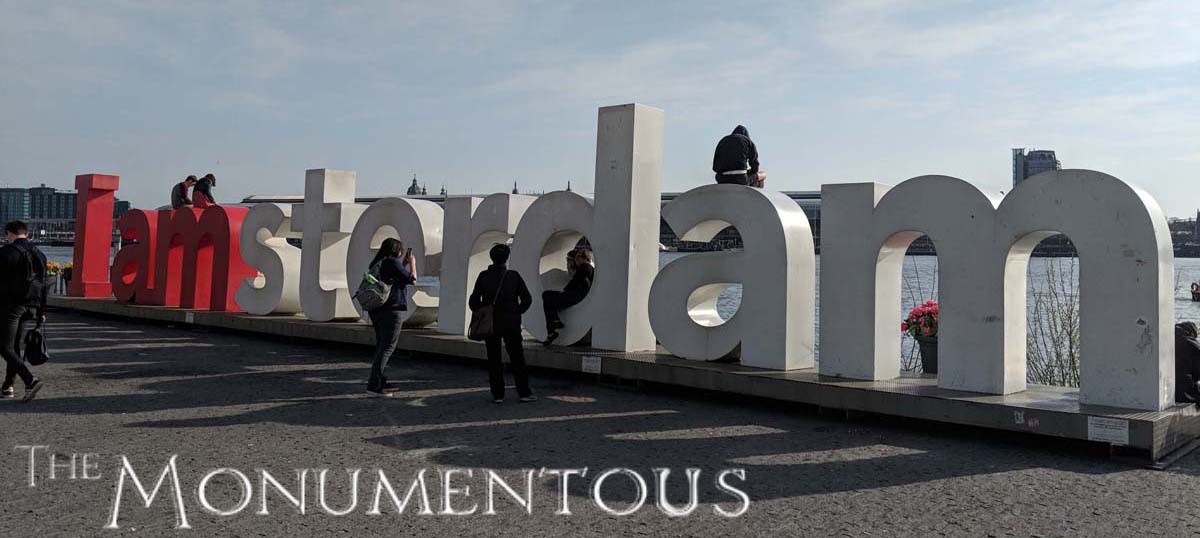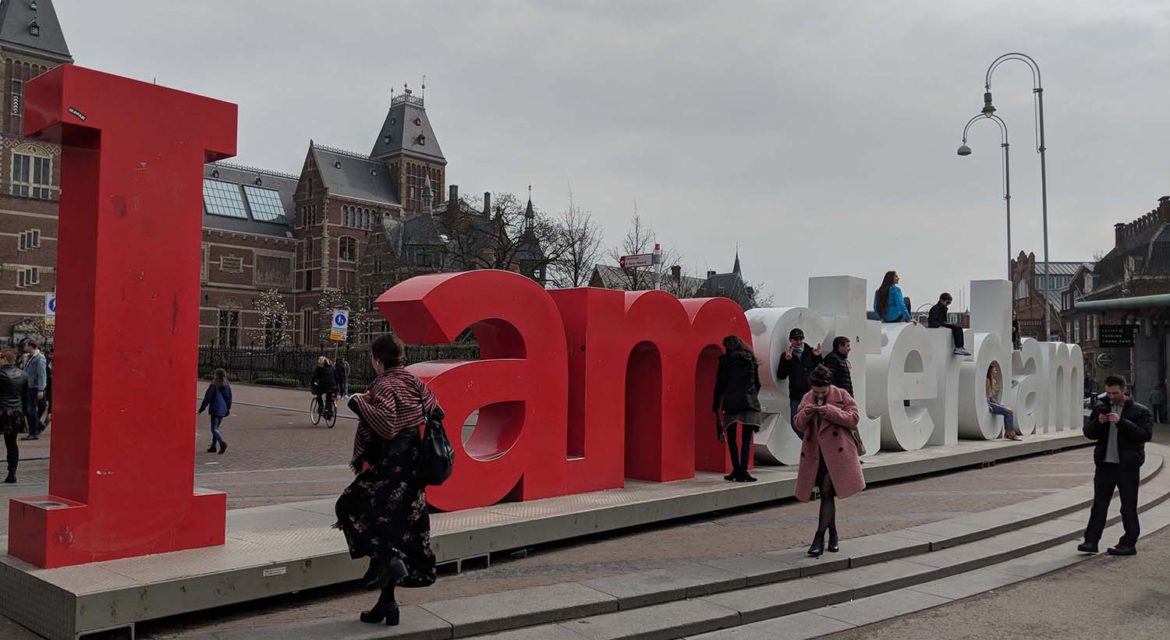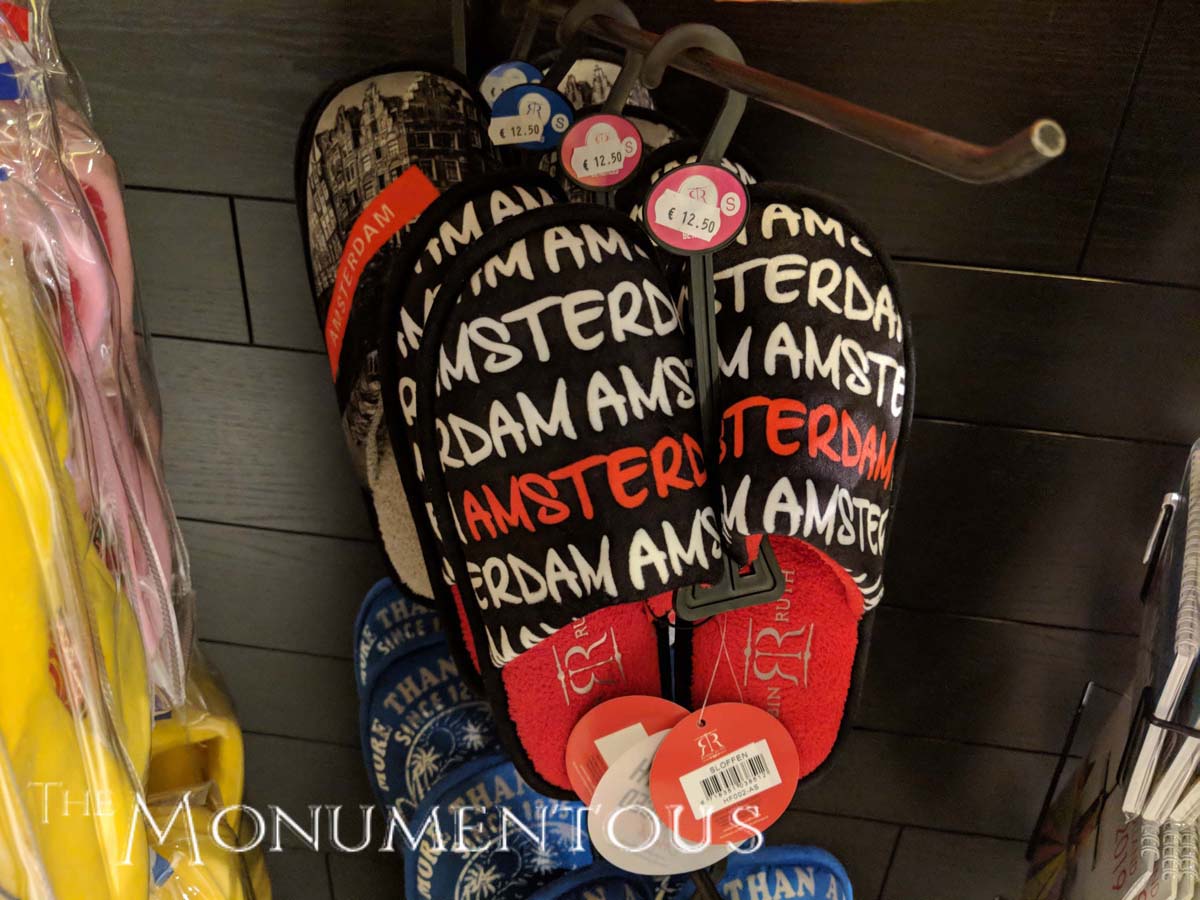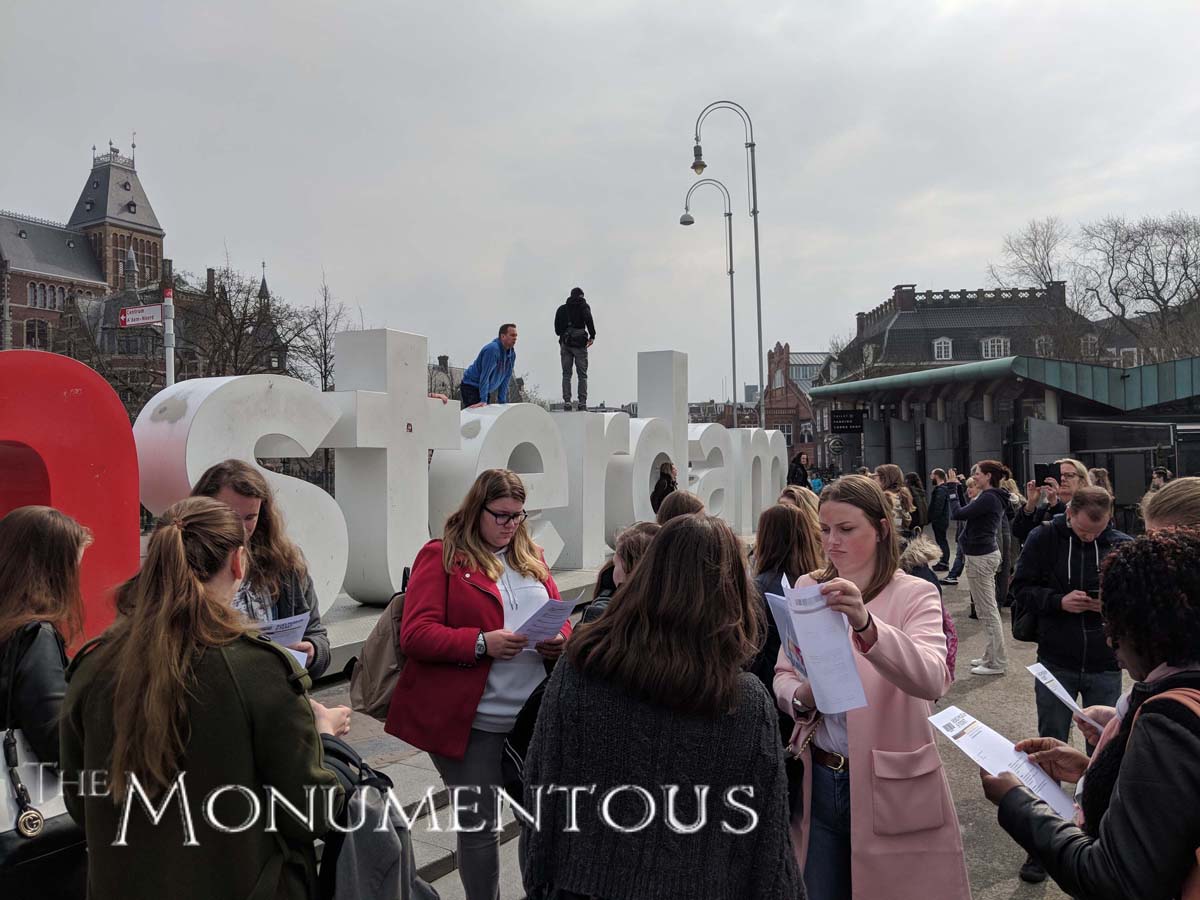 Monuments often have storied or tumultuous tales around how they came to exist, but “I amsterdam” presents an especially simple origin since it began as a brand campaign for the city and its residents. The original intention of the campaign was to market Amsterdam in a positive light in the wake of a financial crisis, but it has come to mean and represent something much more to residents and tourists alike.
Monuments often have storied or tumultuous tales around how they came to exist, but “I amsterdam” presents an especially simple origin since it began as a brand campaign for the city and its residents. The original intention of the campaign was to market Amsterdam in a positive light in the wake of a financial crisis, but it has come to mean and represent something much more to residents and tourists alike.
Debuting in 2004 in the shadow of the famous Rijksmuseum, the “I amsterdam” monument has become one of the city’s most photographed icons and so popular that recreations of it have been setup at other locations. It’s an incredible example of what it can mean to see a monument help transition what would otherwise be a simple endeavor into something with a much more profound impact and legacy.

Marketing the City in a Whole New Light
In the early 2000s, leaders in Amsterdam recognized that the city’s reputation throughout the world had become too focused on red lights, cannabis and canals, and it was something they wanted to change. Spurred by an economic downturn, city leaders decided to brand, position and market the city in a whole new light.
Amsterdam Partners is a public-private partnership that was formed to attain these goals through a marketing initiative that would highlight the city to residents and people from across the globe. Their goal was to create something that would appeal to tourists, but also to the people who lived in the city, as well as the businesses that were located throughout. They needed something that could appeal to and resonate with all three of these groups by creating a coherent, long-term vision for the city.
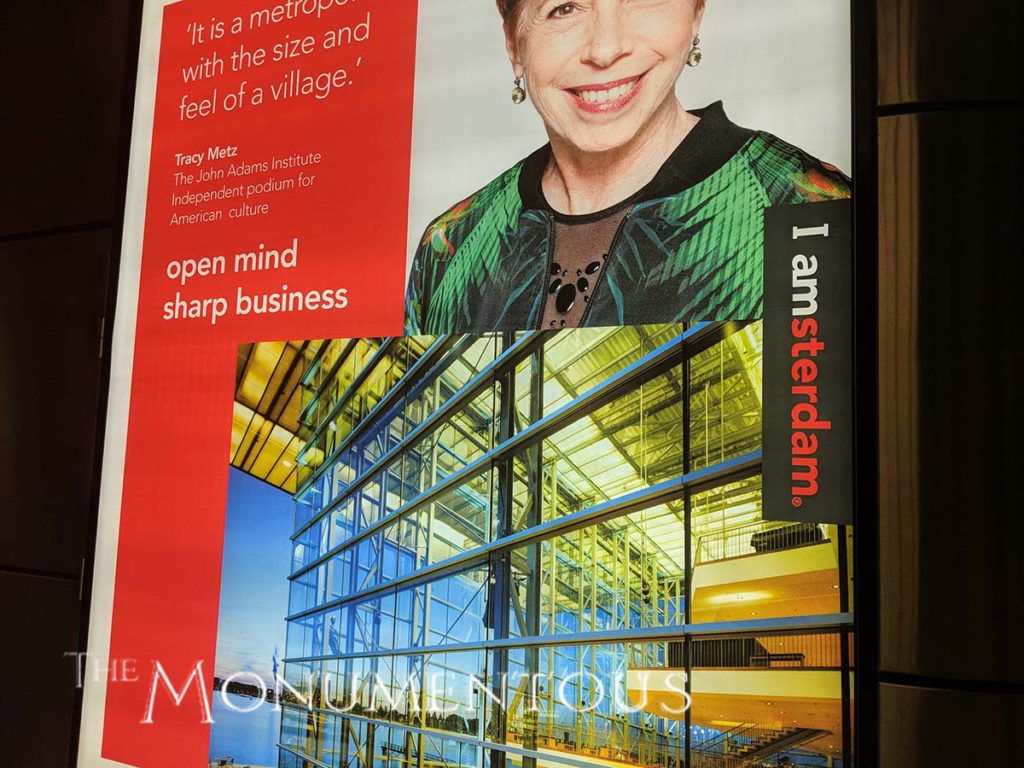 The “I amsterdam” slogan was the result of this initiative. The clear, short and powerful message used colors drawn from the Amsterdam flag and coat of arms and was ultimately chosen because it embodies the spirit of Amsterdam, and could be used to create a city brand that would be recognized all over the world. It was officially launched in September 2004 with a larger than life-sized monument of the slogan in front of the Rijksmuseum.
The “I amsterdam” slogan was the result of this initiative. The clear, short and powerful message used colors drawn from the Amsterdam flag and coat of arms and was ultimately chosen because it embodies the spirit of Amsterdam, and could be used to create a city brand that would be recognized all over the world. It was officially launched in September 2004 with a larger than life-sized monument of the slogan in front of the Rijksmuseum.
Visitors were encouraged to directly interact with the letters in a variety of ways, and that interaction has enabled people to have a whole different experience with the slogan and the city. It proved to be such a success that another set of the “I amsterdam” letters are on display in front of the Schiphol Airport. The other set travels around the city, being tied into a variety of events and initiatives.
The success of the slogan is personified in these monuments, and the interactions and engagements they’ve enabled are being felt across the city and beyond.
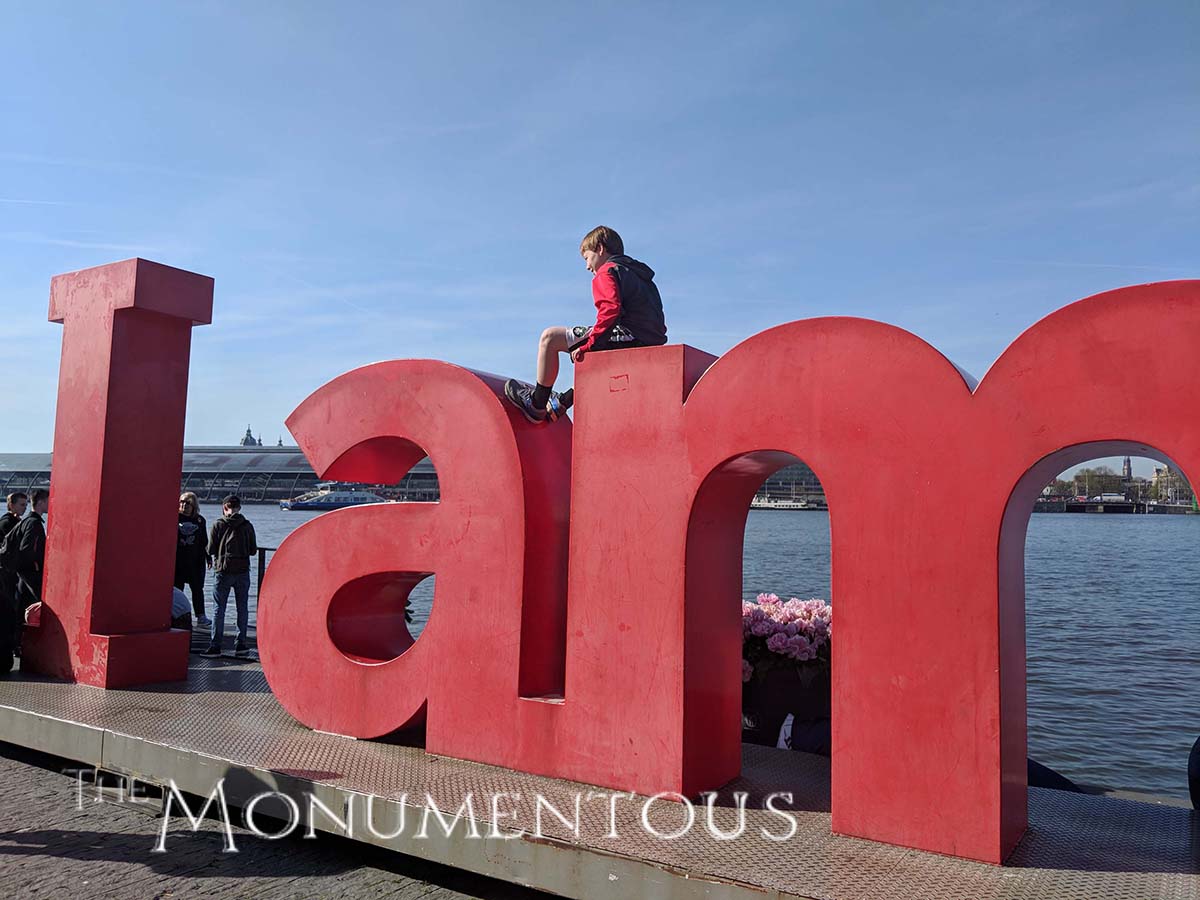
A Collective Phrase for Everyone
 The “I amsterdam” letters are over six feet tall, while the entire phrase is about 80 feet in length. Each letter is estimated to weigh around 500 pounds, and they’ve been built to withstand people climbing and posing on them from every direction. They’ve generated interest to the point that they’ve been targets of theft that may have had to do more with marketing than criminality, which underscores the impact they’ve made to and for the city.
The “I amsterdam” letters are over six feet tall, while the entire phrase is about 80 feet in length. Each letter is estimated to weigh around 500 pounds, and they’ve been built to withstand people climbing and posing on them from every direction. They’ve generated interest to the point that they’ve been targets of theft that may have had to do more with marketing than criminality, which underscores the impact they’ve made to and for the city.
Amsterdam Marketing has estimated that the letters are photographed around 6,000 times a day. All of these interactions are encouraged and taken to another level with the “I amsterdam” website, where users can engage with the brand, as well as on social media via Twitter and Facebook. An app provides those viewers with entirely new experiences with the monument that continues to evolve and change.
The team behind the endeavor have talked about how the slogan has become a collective catchphrase for the city’s residents, regardless of who they are or where they come from. It’s also a phrase that has proven to be recognized and remembered by tourists, and even by people who have never stepped foot in the city.
It’s an impact that can be recognized in countless ways, especially when it comes to the incredible economic benefit that can be directly measured.
Economic Opportunities for a Variety of Stakeholders
Visitors can find the “I amsterdam” monument in the three locations throughout the city, but it’s a phrase that appears in countless other ways and places. Whether in marketing materials, on products, as a means of engagement or anything else, the phrase is being used to enable key economic opportunities, although the process of doing so raises completely different economic considerations.
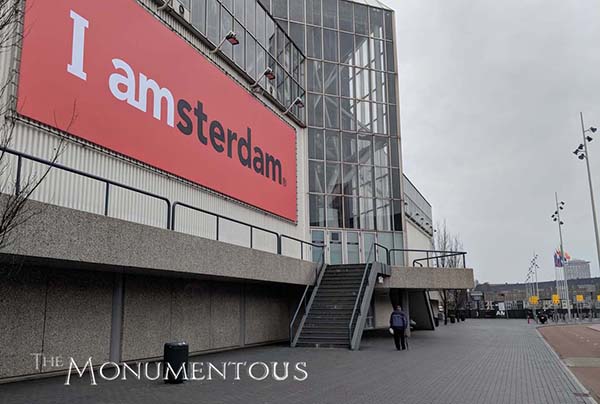 The “I amsterdam” slogan is a registered trademark, meaning anyone who wants to utilize it needs to first be approved by Amsterdam Partners, a process which has its own economic ramifications. It’s a process the organization uses to ensure there’s brand consistency and that the representation fits with the vision behind the campaign in the first place, but also a revenue generator. It’s something they’ve been able to utilize in active and passive ways though.
The “I amsterdam” slogan is a registered trademark, meaning anyone who wants to utilize it needs to first be approved by Amsterdam Partners, a process which has its own economic ramifications. It’s a process the organization uses to ensure there’s brand consistency and that the representation fits with the vision behind the campaign in the first place, but also a revenue generator. It’s something they’ve been able to utilize in active and passive ways though.
The “I amsterdam” webshop is one of the best places to purchase official “I amsterdam gear”, as visitors from across the world can buy anything from jackets to key chains to stationaries that feature the slogan. 3D miniature letters of the monument and even bicycle accessories are also among the items that can be purchased.
Of course, there are countless products available for purchase throughout the city which have “I amsterdam” incorporated into them in one way or another. Some have gotten especially creative in terms of how and where the famous phrase is displayed. Most of these representations have been licensed by Amsterdam Partners, further demonstrating the economic opportunities that can be generated for a variety of stakeholders with this kind of monument.
These economic enablers are only possible because the “I amsterdam” slogan and monument have come to mean something much bigger than even the creators had envisioned.
Creating a Legacy for Amsterdam
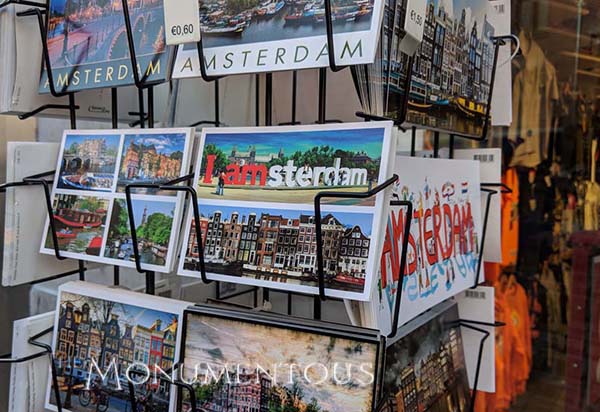 Trying to define what “I amsterdam” means for the city and the Netherlands is a difficult proposition since the monument is so new, but it has already shown what it can mean to make an impact. The monument that debuted outside the Rijksmuseum, where residents, tourists and businesses could directly engage with the slogan and appreciate it on different levels, has enabled much of that.
Trying to define what “I amsterdam” means for the city and the Netherlands is a difficult proposition since the monument is so new, but it has already shown what it can mean to make an impact. The monument that debuted outside the Rijksmuseum, where residents, tourists and businesses could directly engage with the slogan and appreciate it on different levels, has enabled much of that.
We’re just beginning to see the kind impact it will enable for the city though. As others have noted, “I amsterdam” has become not only a part of the cultural identity but a landmark in and of itself that is in the process of creating a legacy for the city and region.
